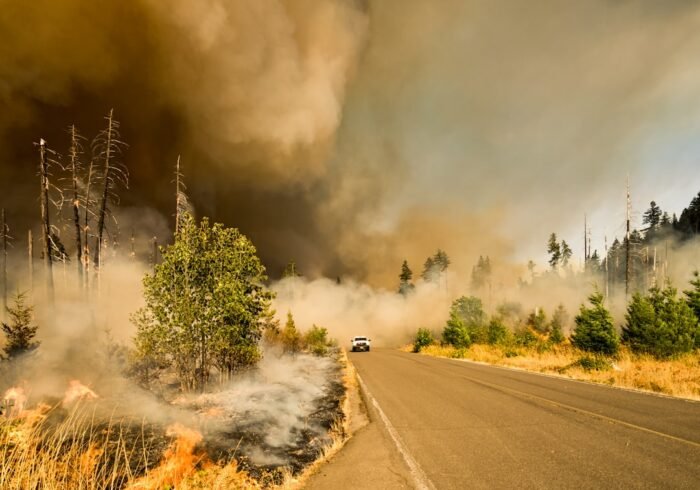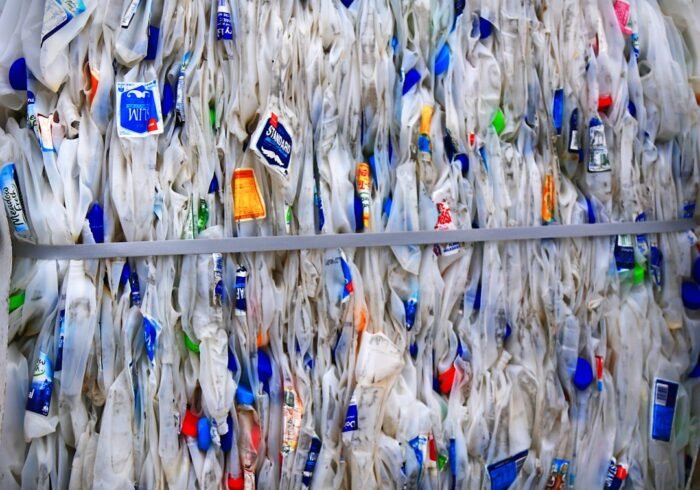Virginia’s Water Contamination Crisis: An Immediate Call to Action Virginia, a state renowned for its natural beauty and rich history, is currently facing a serious water contamination crisis that poses a threat to the environment and public health. As communities throughout the state deal with concerning levels of contaminants in their sources of drinking water, the issue has attracted more attention. The widespread nature of water contamination has alarmed locals, environmentalists, & health officials alike, whether in urban or rural areas. This problem not only shows how vulnerable Virginia’s water systems are, but it also emphasizes how urgently comprehensive solutions are needed to protect the state’s natural resources and public health.
Key Takeaways
- Virginia is facing a water contamination crisis, posing serious threats to public health and the environment.
- Sources of water contamination in Virginia include industrial waste, agricultural runoff, and aging infrastructure.
- Water contamination in Virginia has led to health issues such as gastrointestinal illnesses, reproductive problems, and even cancer.
- Environmental consequences of water contamination in Virginia include harm to aquatic life and ecosystems, as well as contamination of drinking water sources.
- Government response to the water contamination crisis in Virginia has been mixed, with some efforts to regulate pollution but also instances of inadequate enforcement.
Not only is Virginia’s water contamination problem a local problem, but it also represents a larger national issue that many states are dealing with. The likelihood of contaminants contaminating water supplies rises with the expansion of urbanization, agriculture, and industrial activity. Beyond just short-term health issues, this crisis has ramifications for wildlife, ecosystems, and Virginians’ general standard of living. As public awareness increases, it is crucial to investigate the causes of contamination, its effects on health, and the teamwork needed to solve this urgent problem.
Virginia’s water is contaminated by a wide range of natural and man-made sources. Agricultural runoff, which frequently contains pesticides, fertilizers, & animal waste, is one of the main causes. When it rains a lot, these chemicals may wash into rivers and streams or seep into groundwater, raising the nitrate and phosphate levels in drinking water supplies. A large area of Virginia is part of the Chesapeake Bay watershed, which is especially susceptible to this type of runoff, which has a negative impact on aquatic life & water quality.
Apart from agricultural activities, industrial discharges are a significant contributor to water contamination. Hazardous chemicals may be accidentally spilled or directly discharged into adjacent water bodies by factories and manufacturing facilities. Concerns regarding the possible health hazards posed by heavy metals like lead, mercury, and arsenic have been raised by their detection in a number of water sources throughout the state. Older infrastructure also presents a serious risk; leaking pipes and dilapidated treatment plants can contaminate the water supply and make the situation worse. It is crucial to comprehend these sources in order to create strategies that effectively lessen their influence on Virginia’s water systems. There are significant and wide-ranging effects of water contamination on public health.
| Location | Contaminant | Level of Contamination | Health Impact |
|---|---|---|---|
| Flint, Virginia | Lead | Exceeds EPA limit of 15 ppb | Neurological damage, developmental delays |
| Richmond, Virginia | PFAS | Exceeds EPA health advisory level | Potential increased risk of cancer, liver damage |
| Norfolk, Virginia | Chromium-6 | Exceeds California’s public health goal | Increased risk of cancer |
Numerous health problems, from gastrointestinal disorders to chronic long-term conditions, can result from exposure to tainted water. Particularly at risk are vulnerable groups, such as children, the elderly, and people with underlying medical conditions. For example, methemoglobinemia, also known as “blue baby syndrome,” which can be fatal for infants, has been connected to elevated nitrate levels in drinking water. Also, children who are exposed to heavy metals may experience developmental delays & neurological harm. It is impossible to ignore the psychological toll that water contamination has on communities in addition to the immediate health effects.
Regarding the safety of their drinking water, residents may feel stressed and anxious, which could lower their general wellbeing. Along with lowering property values, the stigma attached to tainted water sources can discourage new businesses or residents from relocating to impacted areas. Addressing water contamination is evidently a crucial public health necessity as well as an environmental protection issue, as public health officials continue to keep an eye on the situation. Virginia’s water pollution has equally concerning environmental effects that demand immediate attention.
When pollutants get into waterways, they can damage aquatic life and degrade habitats, upsetting entire ecosystems. Excess nutrients from agricultural runoff, for instance, can cause algal blooms that lower water bodies’ oxygen content and create “dead zones” where fish and other marine life cannot live. Fish populations & biodiversity have significantly declined as a result of nutrient pollution in the Chesapeake Bay, making this phenomenon especially noticeable there.
Contaminated water can also have a domino effect on terrestrial ecosystems. When animals that depend on clean water sources for breeding and drinking are exposed to toxins, their populations may decline or, in extreme circumstances, they may go extinct. In addition to posing a threat to individual species, biodiversity loss also upsets ecological balance and resilience.
Protecting water quality is crucial for preserving ecosystems that sustain both human communities and wildlife, as Virginia continues to face these environmental challenges. Government organizations at the state and federal levels have started putting policies in place to deal with the growing problem of water contamination. The Virginia Department of Environmental Quality, or DEQ, has taken action to enforce laws governing agricultural practices and industrial discharges as well as to monitor water quality throughout the state.
Initiatives have also been started to upgrade aging infrastructure and enhance wastewater treatment facilities in order to stop contamination and leaks. However, detractors contend that rather than being proactive, government responses have frequently been reactive. Regulations do exist, but they may not always be enforced, and money for the required upgrades may not always be available. More transparency about the results of water quality tests & stricter regulations on pollutants have been demanded by advocacy groups. Pressure on government representatives to give clean water projects top priority and deploy funds wisely in order to address this urgent issue is growing as public awareness rises.
Across Virginia, communities are banding together to take action in response to the problems caused by contaminated water. To advocate for policy changes that prioritize access to clean water and to increase awareness of local water issues, grassroots organizations have emerged. These organizations frequently involve locals in community meetings, workshops, and educational campaigns to educate them about the dangers of drinking tainted water and to give them the power to hold local government officials accountable. Community-led projects have emphasized sustainable practices and local waterway restoration in addition to advocacy activities. As locals band together to clear their surroundings of trash and pollutants, volunteer clean-up events along rivers and streams have grown in popularity.
In order to lessen runoff into adjacent water sources, some communities are also investigating alternative agricultural techniques that minimize the use of chemicals and enhance soil health. These group initiatives show how effective community involvement can be in resolving the water contamination issue and encouraging conservation of Virginia’s natural resources. Preventive and remediation measures must be given top priority in order to successfully address Virginia’s ongoing water contamination problem. Investing in the state’s infrastructure modernization is a crucial strategy.
While ensuring that current systems can manage the increased demand brought on by population growth, upgrading aging pipes and treatment facilities can greatly lower the risk of contaminants entering drinking water supplies. Reducing runoff from farms into waterways also requires the use of sustainable agricultural practices. Encouraging farmers to use integrated pest management, buffer strips, and cover crops can reduce chemical use while improving soil health.
Improving industrial discharge regulations will also be essential for ensuring that dangerous materials do not enter Virginia’s waters and for holding polluters responsible. Campaigns for public education are also essential in raising locals’ awareness of water-saving techniques. Communities can work together to create cleaner waterways by inspiring people to use fewer dangerous chemicals at home and by promoting appropriate waste disposal practices.
Ultimately, finding long-term solutions to stop water contamination in Virginia will require an all-encompassing strategy that incorporates public education, sustainable practices, infrastructure investment, and regulatory enforcement. Government representatives, community members, environmentalists, & business executives must all give the complicated problem of Virginia’s water contamination crisis their full attention right now. Collective action is necessary to address this urgent issue as Virginians face the reality of contaminated drinking water sources and their profound effects on ecosystems and public health.
More than ever, residents must speak with local leaders to demand transparency about the results of water quality tests and to push for stricter pollution regulations. Communities ought to band together in support of projects that restore nearby waterways & encourage environmentally friendly behaviors that safeguard their natural resources. Virginia can strive toward a future where everyone has access to clean water by encouraging cooperation amongst stakeholders at all levels, including commercial entities, non-profits, government agencies, & citizens.
In summary, solving the water contamination crisis is a matter of community resilience and public health equity in addition to environmental concerns. By banding together to fight this crisis, Virginians can create a healthier future where generations to come can enjoy unrestricted access to clean water.



